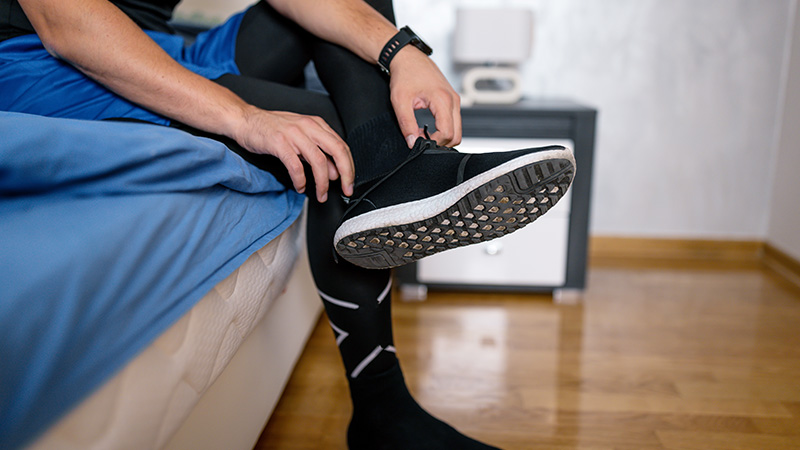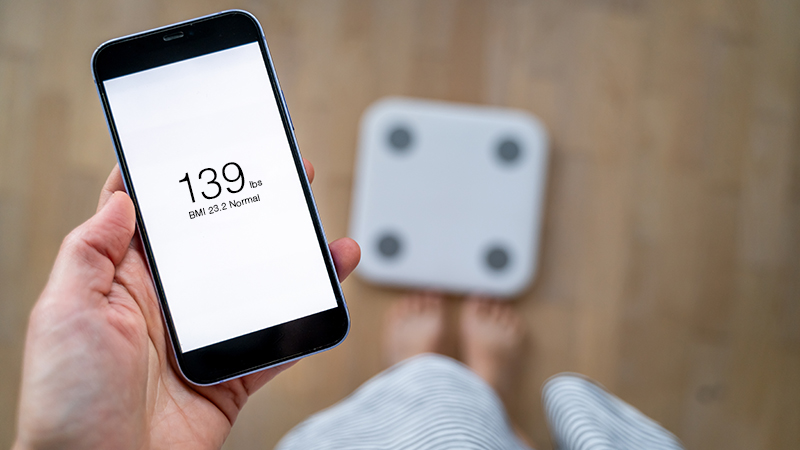4 Breathing Exercises for Less Stress, More Energy
How to Breathe Your Way to Better Health
Updated November 2025
You take about 20,000 breaths a day, and most of the time, you’re not thinking about each inhale and exhale. But your breath is one of your top energy sources and a significant way to relieve stress and feel more relaxed.
Specific breathing exercises can help improve your health by activating your body’s natural relaxation response. This is a state of deep rest that changes the physical and emotional responses to stress that can lead to:
- A decreased heart rate
- Lower blood pressure
- Reduced muscle tension
Studies show that a long-term breathing practice reduces cortisol and inflammation.— Mary Ella Blair Wood, DO
When you’re stressed, your sympathetic nervous system (“fight or flight” mode) is activated. To feel calm, you can activate your parasympathetic nervous system (“rest and digest” mode) through breathing exercises known as “pranayama” in Sanskrit, the ancient language of yoga.
“Many breathwork techniques activate the vagus nerve, which is your body’s main parasympathetic pathway,” says Mary Ella Blair Wood, DO, a family medicine physician at Northwestern Medicine. “This nerve sends signals to the body to slow the heart rate and lower blood pressure. Studies show that a long-term breathing practice reduces cortisol and inflammation.”
Learn four simple breathing exercises to help you manage stress and feel both energized and relaxed.
Diaphragmatic Breathing
Many people find that their breath originates from their chest. This type of breathing is known as chest breathing or shallow breathing. It can happen when you sit hunched over in a chair for long periods of time and when you’re stressed.
On the other hand, when your breath begins in your belly, it’s called diaphragmatic breathing, belly breathing or abdominal breathing.
When you breathe, your stomach muscles help move your diaphragm — a dome-shaped muscle at the base of your lungs. Diaphragmatic breathing helps strengthen your diaphragm. It lets you use your lungs more fully, making your breathing more efficient.
You can do this breathing method while lying on your back with your knees bent or sitting in a chair. Because you use your belly instead of your chest, you can feel the movement of your diaphragm when you inhale and exhale.
- Place your hands on your belly.
- Inhale through your nose. As you breathe in slowly, notice how your belly and hands rise. Visualize a balloon expanding in your belly. If your stomach doesn’t expand, breathe a little deeper into your belly.
- Exhale through pursed lips as if you were blowing bubbles, while tightening your stomach muscles. Visualize a balloon deflating. Your belly and hands will lower as you breathe out.
- This is one round of breath.
- Practice this breathing exercise for up to five minutes once a day.
Diaphragmatic breathing can help if you have medical conditions that make you short of breath like asthma and chronic obstructive pulmonary disease.
It can also help with the following conditions:
- Anxiety
- High blood pressure
- Irritable bowel syndrome
- Chronic pain
- Insomnia
“By restoring a slower, more efficient breathing pattern, diaphragmatic breathing helps regulate variations in heart rate, improve oxygenation and reduce stress, which is behind many chronic conditions,” says Dr. Wood.
Alternate Nostril Breathing
Alternate nostril breathing, or “Nadi Shodhana” in Sanskrit, can help lower stress levels and improve your focus. In this breathing exercise, you alternate the nostril you breathe in and out of one side at a time.
- Find a comfortable seat. You can close your eyes or bring your gaze in front of you.
- Bring your right hand toward your nose and your index and middle fingertips toward the center of your right palm.
- Bring your right thumb to your right nostril and close your right nostril with your thumb.
- Inhale through your left nostril.
- At the top of your inhale, close your left nostril with your right ring and pinky fingers. Then, lift your right thumb off your right nostril and breathe out through the right side.
- Inhale through your right nostril.
- At the top of your inhale, close your right nostril with your thumb. Lift your right ring and pinky fingers off the left nostril. Breathe out through the left side.
- Repeat this breathing exercise for a few minutes. Finish your last exhale through your left nostril.
Box Breathing
Box breathing, also called square breathing and 4-4-4-4 breathing, is named for the four equal parts of the breath — like the four sides of a box or square.
It may be helpful to visualize a square while practicing box breathing.
- Inhale through your nose and slowly count to four seconds in your mind.
- At the top of the inhale, hold your breath for four seconds.
- Open your mouth to slowly exhale for four seconds.
- Close your mouth and hold your breath again for four seconds.
- Repeat three more times for a total of four rounds.
If you find that four seconds is too long to hold your breath, start with two or three seconds for each part of this breathing exercise.
4-7-8 Breathing Technique
The 4-7-8 breathing technique can help you reduce anxiety and fall asleep. The repetition of this breathing exercise helps your mind stay focused on the specific length of each inhale, hold and exhale.
- Inhale slowly through your nose for four seconds.
- Hold your breath for seven seconds.
- Exhale through your mouth for eight seconds.
- Repeat this cycle three more times.
- Come back to your natural breath.
This breathing exercise is more advanced. If you need to work up to holding your breath for seven seconds, try reducing the time by half for each part of the breath.
Talk to Your Physician Before You Begin
Before adding breathwork to your routine, check with your physician if you have any medical conditions or concerns.
Certain rapid or forceful breathing techniques like “Kapalabhati” (Skull Shining Breath), “Bhastrika” (Bellows Breath) and “Kumbhaka” (breath retention) are not recommended for people with:
- Cardiovascular disease
- Unmanaged or high blood pressure
- Respiratory disorders
“If you are pregnant, avoid alternate nostril breathing and other breathing techniques where you hold the breath,” says Dr. Wood. “You want to maintain optimal oxygen delivery for mother and baby. Holding the breath can temporarily restrict oxygen flow, increase intra-abdominal pressure and affect the regulation of blood pressure.”
How to Begin Practicing Breathing Exercises
Take a deep breath and start with one breathing practice once a day at a consistent time each day.
You can try alternate nostril breathing after you brush your teeth in the morning or the 4-7-8 breathing technique before you go to sleep. Getting into the habit of practicing breathing exercises every day will help you stick with them.
As you begin adding breathing exercises into your routine, notice how you feel and make changes as needed. You may notice increased energy, a greater feeling of calm and that you’re better able to respond to stress.






